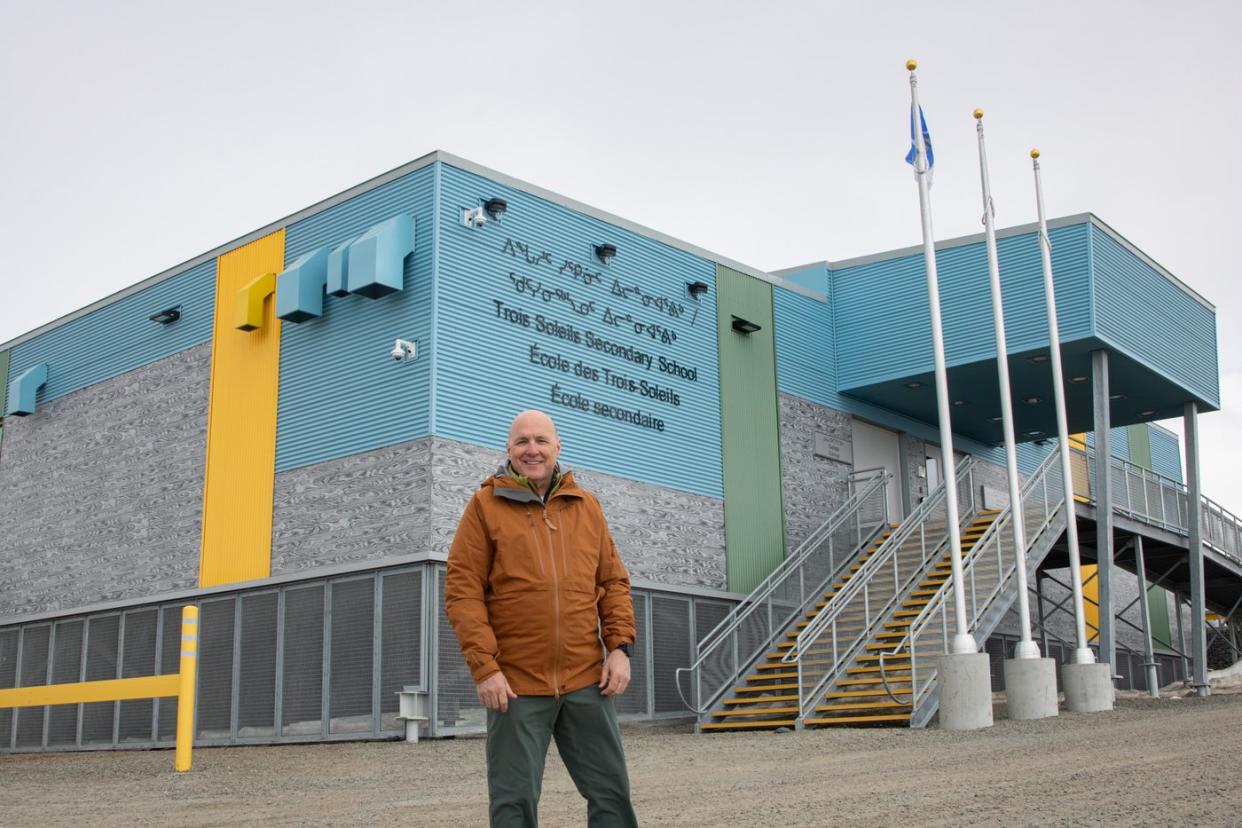Expansion brings opportunity for growth at Iqaluit’s French school

People in Iqaluit are coming together this weekend to celebrate a $32.9-million addition to the city’s French-language public school.
The new wing at École des Trois-Soleils opened in September.
Michael Philbin, the interim executive director for the Nunavut Francophone School Board, spoke to Nunatsiaq News this week about what the expansion means for his community.
“I think it inserts itself … in the long-term vision of the school board, and also French language education in Nunavut, where we are promoting the continuum of education from early years,” he said.
“From kindergarten all the way to Grade 12, [it] is very important to have that continuum and housed in, essentially, one building.”
Philbin is new to Iqaluit. He started in his position in March, moving to Nunavut after working in Ontario’s French-language school system.
École des Trois-Soleils currently has 94 students, Philbin said, 12 of whom are at the high school level.
French-language instruction was previously only available for elementary-age students. A high school wing allows students to complete their education in French.
“Globally, I think, it’s good for the Iqaluit community and it’s also good for Nunavut as well,” Philbin said.
The original building was 14,255 square feet, but expansion has more than doubled its size to 37,870 square feet, according to Matthew Illaszewicz, director of stakeholder engagement at Nunavut’s Department of Education.
The cost to design and build the expansion of the school was paid for by the Nunavut and federal governments, Illaszewicz said.
The new wing features several features, including a science lab, shop class, study areas, a daycare called Petits Nanooks, and a gym which can also serve as a performance centre and community gathering space.
The gym has already been used for community sports and cultural events.
On the walls throughout the school are pictures and biographies of famous Inuit — something Philbin said is of “first importance” to have displayed.
Among the Inuit featured are former MPs Nancy Karetak-Lindell and Leona Aglukkaq, artists Tanya Tagaq and Elisapie Isaac, former National Hockey League player Jordin Tootoo, and historical figures including Nakasuk, the paddler who helped the U.S. military establish a military base that eventually became the city of Iqaluit.
“It’s very important to demonstrate you know the Inuit who have developed Nunavut and Iqaluit, and it’s thanks to them that we are here today to be able to grow as a community,” Philbin said.
The inauguration ceremony Saturday, starting at 6:30 p.m., is planned as a celebration of community and culture, he said.
There will be traditional food on hand, and attendees will be treated to performances from the Inuksuk Drum Dancers, Terry Uyarak and Jens Jeppesen.
The ceremony was originally to take place in December but was cancelled due to weather.
“Hopefully, we could expand in future years to go towards post-secondary, but right now we’re really focused on solidifying our elementary and our secondary panels,” Philbin said.
“We’re in our first year of existence as a high school so it takes time to grow, but I’m confident that the programs and services that we offer will attract more students.”
Jeff Pelletier, Local Journalism Initiative Reporter, Nunatsiaq News


